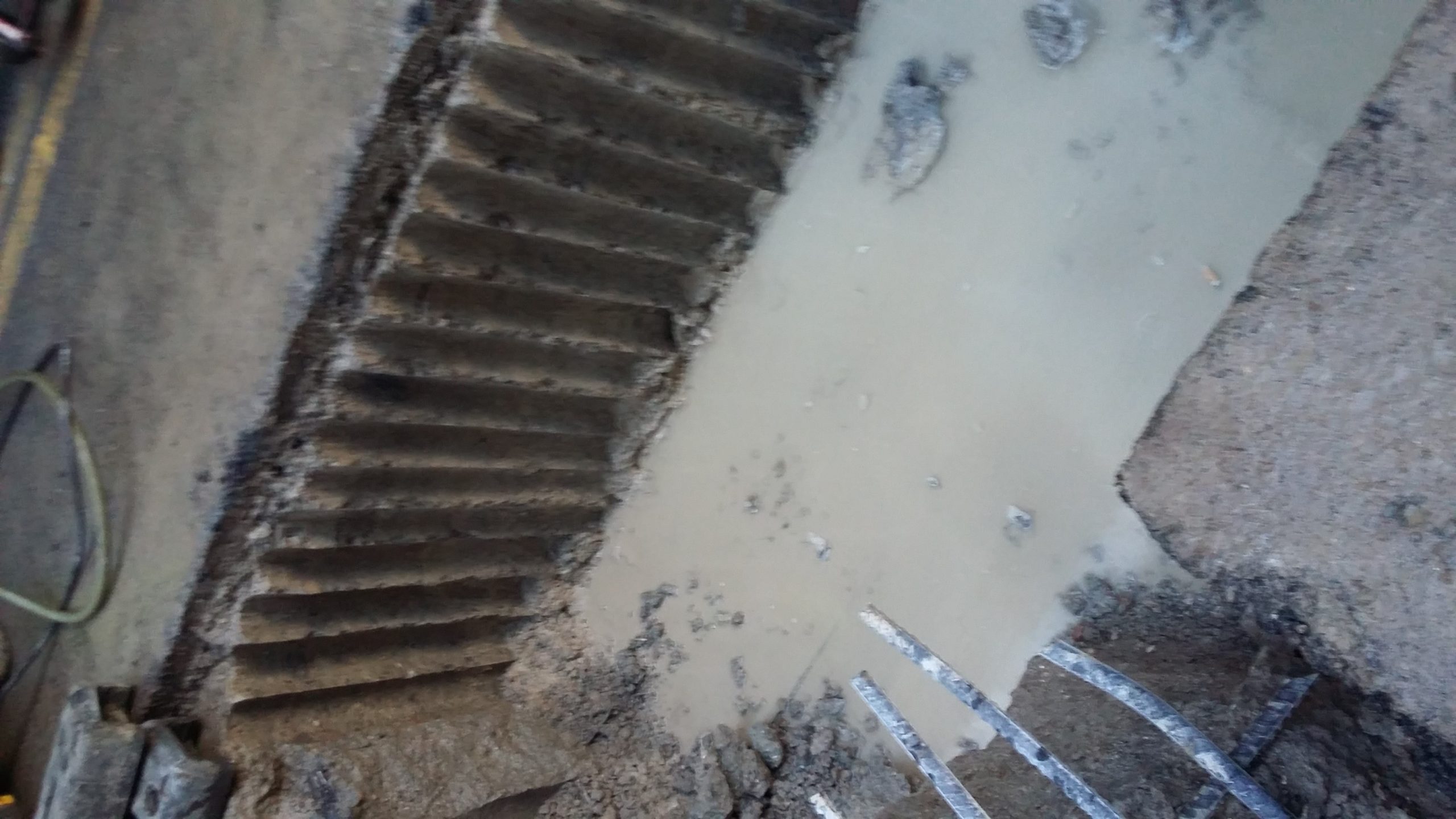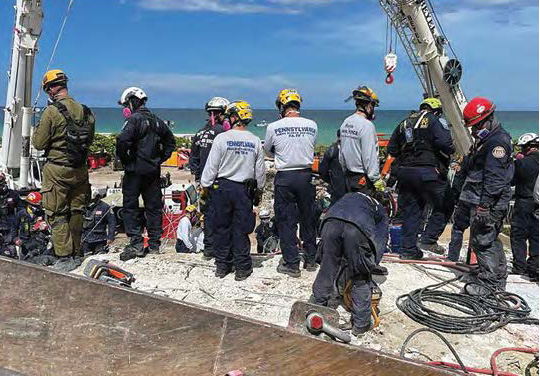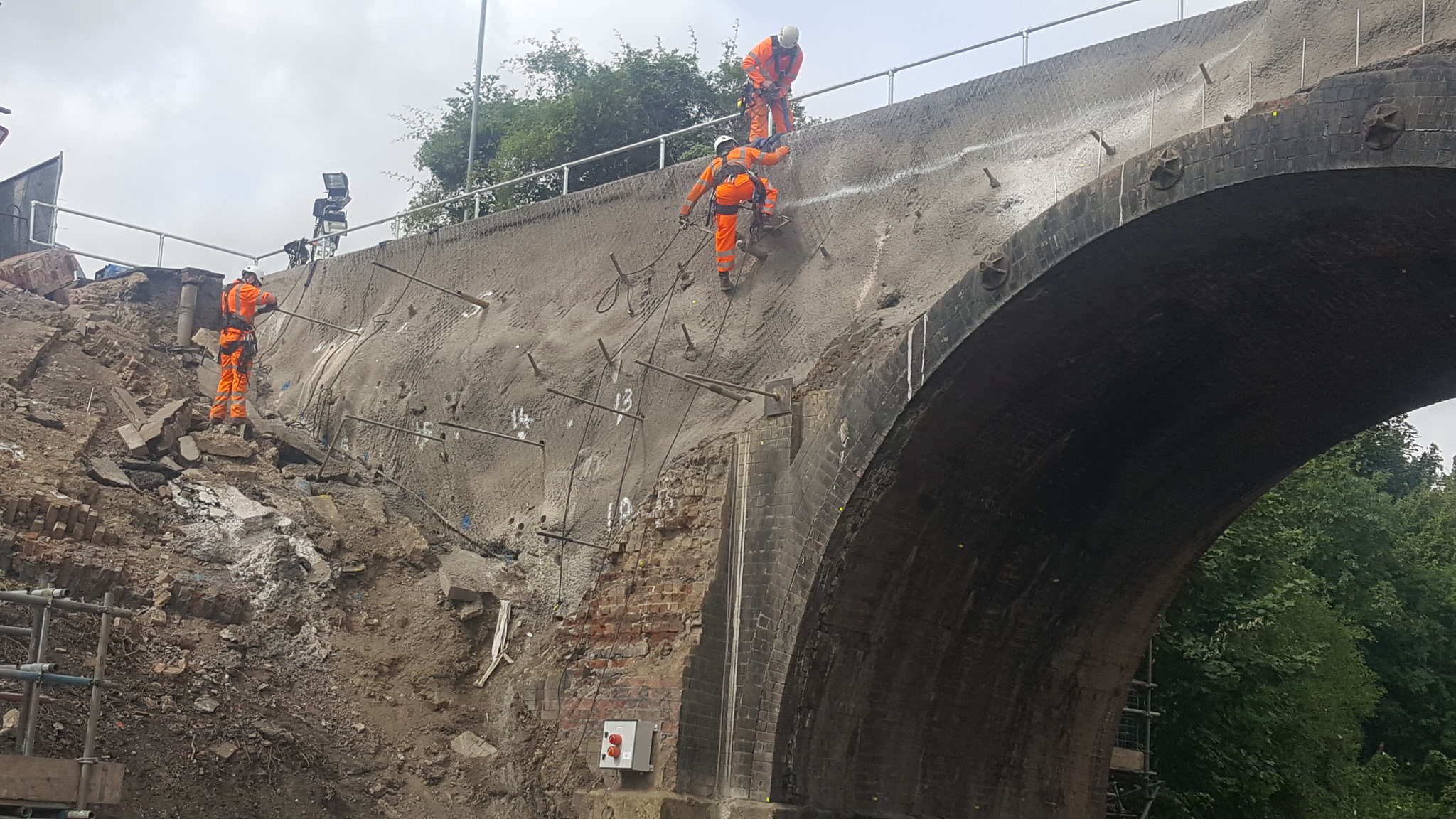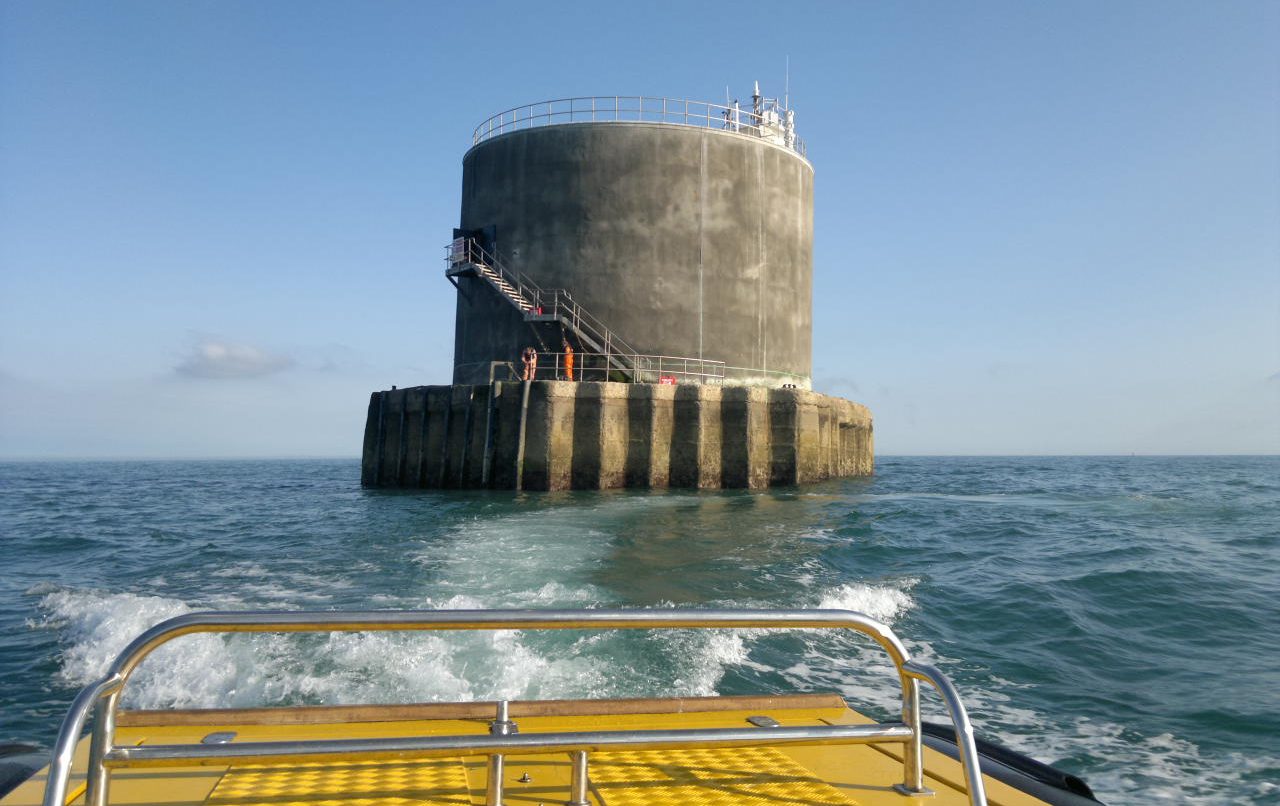
Cutting Class

Core Drilling Contractor Gives Lesson in Concrete Removal
A general contractor was told “shush” when it attempted to remove a substantial area of concrete from outside the library of a top-ranking university, so it called upon a specialist diamond driller to lead a class on low-noise demolition.
A national utility company, Vital Energi, was faced with the task of breaking out a piece of concrete measuring 8.5 meters (27.9 feet) long, 1.3 meters (4.3 feet) wide and 1 meter (3.3 feet) deep at the South Kensington Campus of Imperial College London, United Kingdom. The concrete area was a redundant crane base that had been constructed for previous work at the library, and had been covered with paving. The concrete needed to be removed so the utility company could create a trench and install a new gas pipeline for the college and surrounding buildings.

Stitch drilling techniques were employed around the perimeter of the 27.9-foot by 4.3-foot concrete trench area.
However, when a general contractor removed the layer of paving and discovered the concrete crane base, it attempted to remove the steel reinforced concrete with an excavator and hammer attachment. This proved to be too loud and caused excess vibration within the college library building, so Vital Energi Utilities contacted the London office of CSDA member D-Drill Master Drillers Ltd. and asked the professional sawing and drilling contractor to find a solution that would keep noise and vibration to a minimum.
Branch manager Jimmy Smith explained, “The heavy excavator was making too much noise and we had to find a way to remove the concrete without causing a disturbance. Using our automatic feed diamond drilling rigs, we came up with a plan to stitch drill the perimeter of the trench. Once these openings and others were completed, we employed bursting techniques to break the concrete into manageable pieces for removal.”
The team from D-Drill arrived at the jobsite and began setting up a rig-mounted unit for stitch drilling to commence. A Hilti 110-volt DD 350 core drill machine fitted with a 107-millimeter-diameter (4-inch) bit was mounted at the location of the agreed start point along the perimeter, and it took the operator approximately one hour to complete one hole to the specified 1-meter (3.3-foot) depth.
D-Drill then continued to work its way around the perimeter of the 8.5-meter (27.9-foot) by 1.3-meter (4.3-foot) concrete trench area, creating 208 holes in total and taking around 120 hours to complete. The operator’s progress was slowed because of the presence of two mats of steel reinforcing bars, one at the top and one at the bottom of the concrete consisting of T25 and T30 bars. Speed and pressure was adjusted to account for the drilling of steel. Not only was the contractor able to dramatically reduce noise and vibration at the jobsite, but its application of wet cutting techniques made sure the creation of dust and debris was all but eliminated.

Holes were made 4 inches in diameter and 3.3 feet deep.
With the perimeter stitch drilling complete, the core drill operator from D-Drill then made a series of 200-millimeter-diameter (8-inch) holes in the concrete trench to accommodate the company’s hydraulic bursting head. The operator created pairs of holes spaced 750 millimeters (29.5 inches) apart along the 8.5-meter (27.9-foot) length of the trench in 11 hours, which amounted to 12 holes in total.
The bursting head was inserted and the concrete was broken out. A 3-ton excavator was then used to remove the pieces from the work area and all debris was transported from site.
In total, D-Drill spent 13 days on-site to help create the concrete trench and remove the remains of the redundant crane base. Operators created 208 stitch drill holes and a further 12 holes for the bursting head, all to a depth of 1 meter (3.3 feet). The work was completed on time and within budget. This meant that students in the library were able to continue their studies uninterrupted and the general contractor was delighted with the result. (Any contacts/quotes we can use from the general contractor?).
“Not only was the work completed on schedule, but also without any noise or vibration to disrupt those in the Imperial College Library so we were very pleased with the outcome” explained Mr. Smith. “Our operators were very careful during the stitch drilling portion of the work and kept the trench straight and plumb. The client was very happy with the work we did,” he added.
Professional concrete sawing and drilling contractors are well educated in the fields of industrial demolitions and infrastructure renovations, as this job shows. Experienced cutters learn valuable lessons each day on the jobsite that allow them to complete jobs safely and efficiently.
Company Profile
D-Drill Master Drillers Ltd. has been a member of CSDA for 35 years and has been in business since 1967. Based in Coventry, England, the company has 94 employees and 70 trucks in 10 locations across the country. D-Drill offers services that include core drilling, slab sawing, wall sawing, hand sawing, wire sawing, controlled demolition, diamond floor grinding and floor preparation services.
Resources
General Contractor:
Vital Energi Utilities
Sawing and Drilling Contractor:
D-Drill Master Drillers Ltd.
Coventry, United Kingdom
Phone: 44-1752 341364
Email: jimmysmith@d-drill.co.uk
Website: www.d-drill.co.uk
Methods Used: Core Drilling














![Semper Paratus [Always Ready]](https://www.concreteopenings.com/wp-content/uploads/2014/11/1-Photo-6-e1424382046143-scaled.jpg)